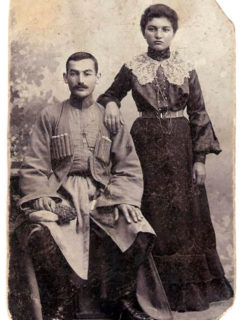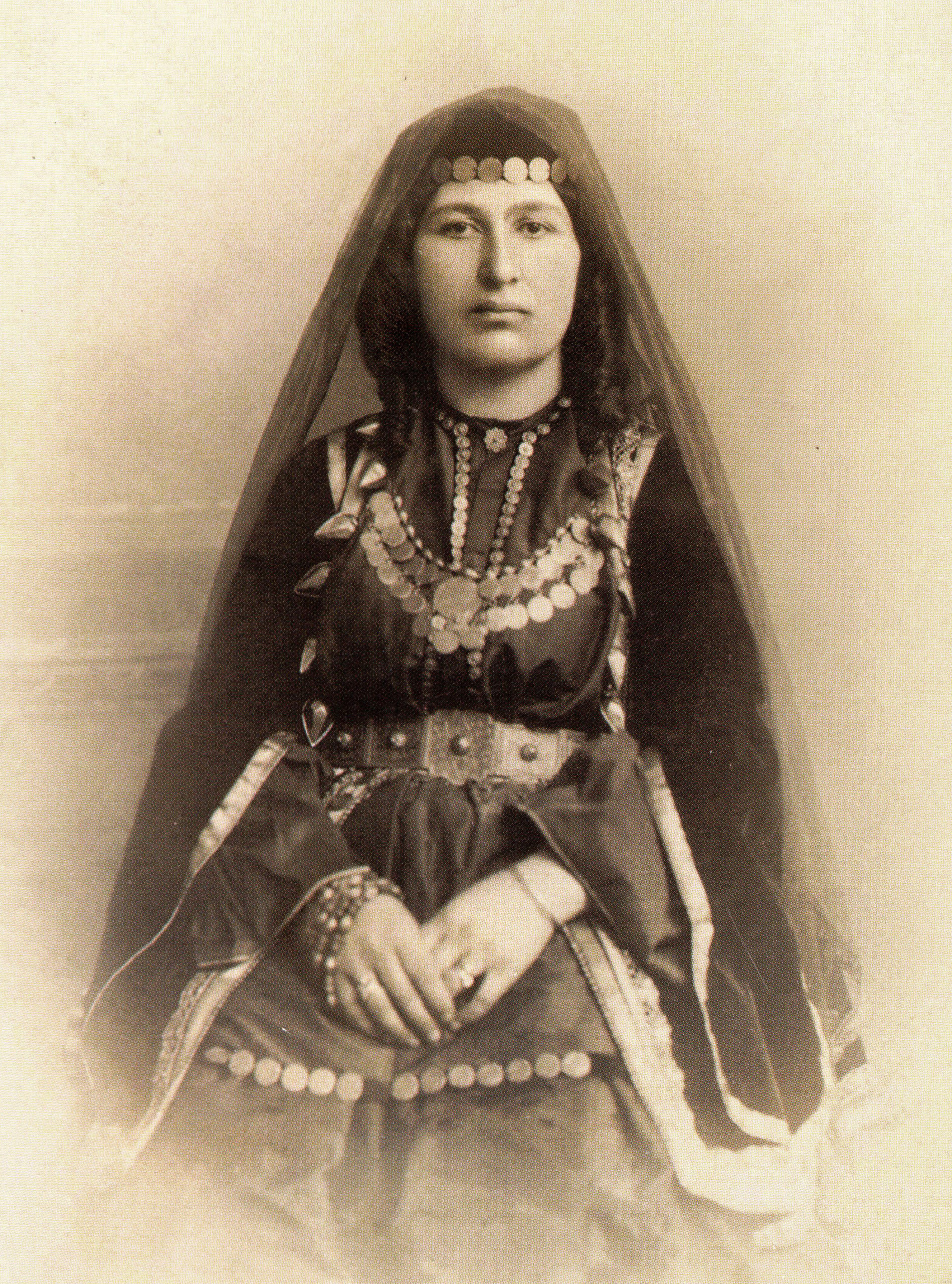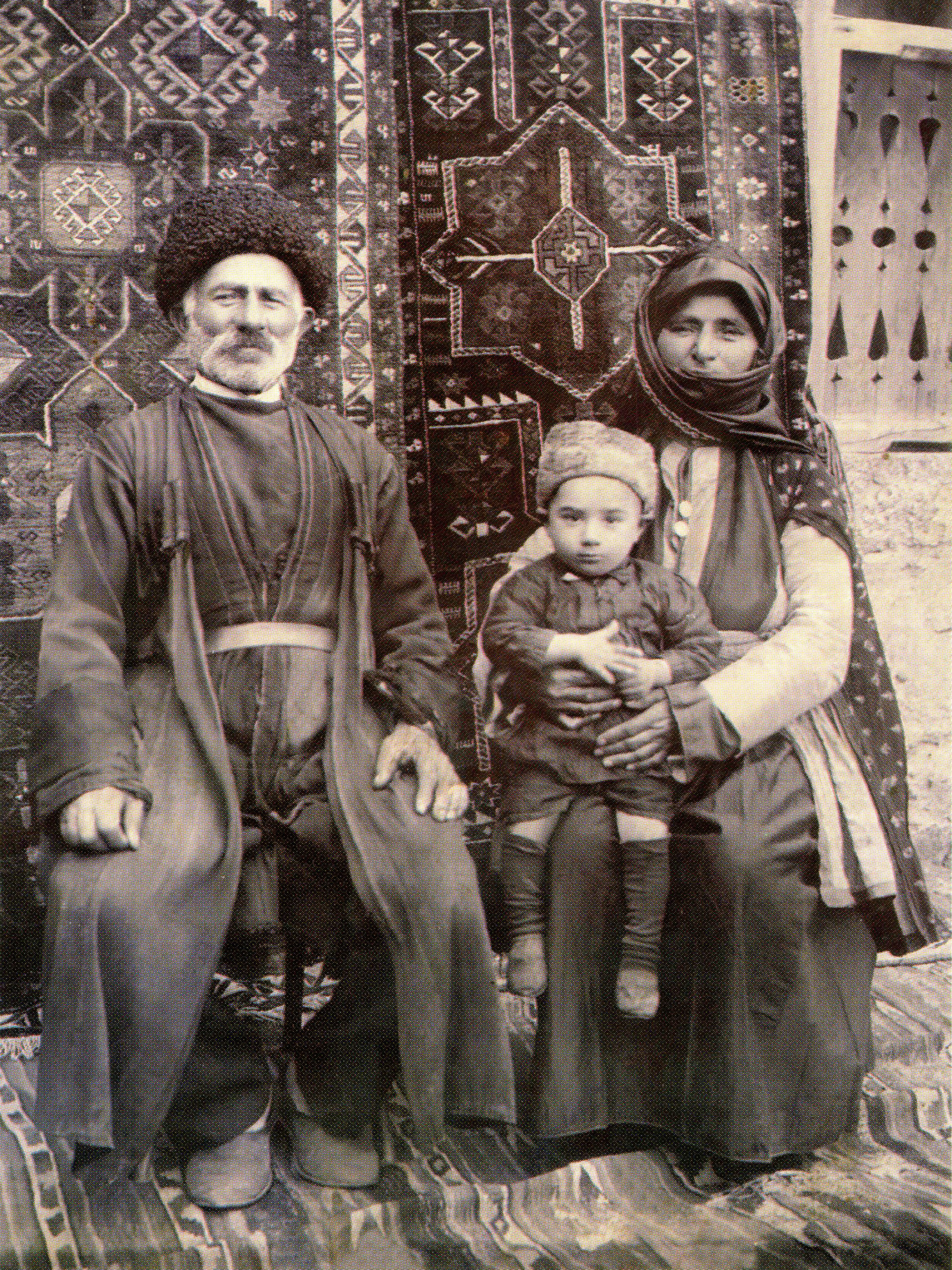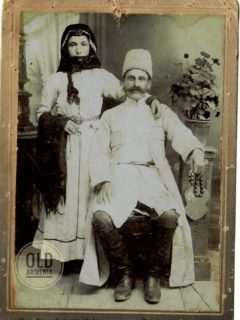- Artsakh: People of the Forest
- Antiquity & Early Middle Ages
- High Middle Ages
- Late Middle Ages
- 19th Century
- 20th Century
- 21st Century
- Historical timeline
In the nineteenth century, peace returned to the region once it was gradually incorporated into the Russian Empire. The short-lived Karabakh Khanate was finally dissolved, and Armenian refugees returned to their homes in Artsakh. Throughout the nineteenth century, the population of Artsakh steadily increased, and the regional capital city of Shushi developed as a trade and cultural center.
Artsakh remained part of Russia’s Governorate of Elisavetpol from 1868 to 1917. Sheltered from Ottoman and Persian aggression, it experienced a measure of development during the nineteenth century, and the city of Shushi became one of the principal Armenian and Caucasian Tatar centers of culture, trade and education.
By the number of inhabitants and the level of development of civil infrastructure and cultural institutions, Shushi surpassed all other cities in Eastern Armenia. After Tiflis and Baku, it ranked third in the Southern Caucasus, overcoming even the provincial capital city of Elisavetpol. In 1826, Shushi had a population of 15,188 Armenians and 11,595 Tatars.
Numerous books and over a dozen newspapers and magazines were published in Shushi in Armenian. Five churches were built during the nineteenth century, including the Ghazanchetsots Cathedral of the Holy Savior – the largest Armenian church in the Southern Caucasus. Turkoman Moslems erected three mosques, two of them in 1875 and one in 1885. The latter were the only Islamic architectural monuments within the administrative borders of the Nagorno Karabakh Autonomous Region established by the Bolsheviks in 1923.
Precise demographic data about Artsakh’s former territory of the Five Melokdoms exist for the years 1823, 1832, 1850, 1873, 1886 and 1897. It shows that the Armenian population on those lands increased from 30,850 in 1823 to 106,363 in 1897, while the population of Moslem Turkomans (Russian-designated “Caucasian Tatars,” future “Azerbaijanis”) went from 5,370 to 20,409 for the same period. The Turkomans were primarily concentrated in the Muslim quarter of the city of Shushi (known to them as Shusha), which became the regional capital of the province.

The most important demographic reference for the period of early years of the Russian administration of the Caucasus was Russian Empire’s demographic survey of 1823, which was part of the regional governor’s Count Alexei Yermolov’s larger report, known as the Description of the Karabakh Province. The survey prepared several years before the 1828 large-scale Armenian migration from Persia to the newly established Armenian Province, shows that all Armenians of Artsakh compactly resided in its highland portion, i.e. on the territory of the five traditional Armenian principalities – Giulistan, Khachen, Jraberd, Varanda and Dizak – and constituted an absolute demographic majority on those lands.
The contemporary analysis of the 1823 Russian survey was published in 2011 in the United States as an academic study. [1] It is available from Amazon.com and US university libraries.
At the start of the twentieth century, the Armenian Bishop of Karabakh counted 222 churches serving 224 villages and over 200,000 parishioners.
- George A. Bournoutian. The 1823 Russian Survey of the Karabagh Province: A Primary Source on the Demography and Economy of Karabagh in the Early 19th Century. Mazda Publishers; Bilingual edition (September 15, 2011), CA, 2011.




